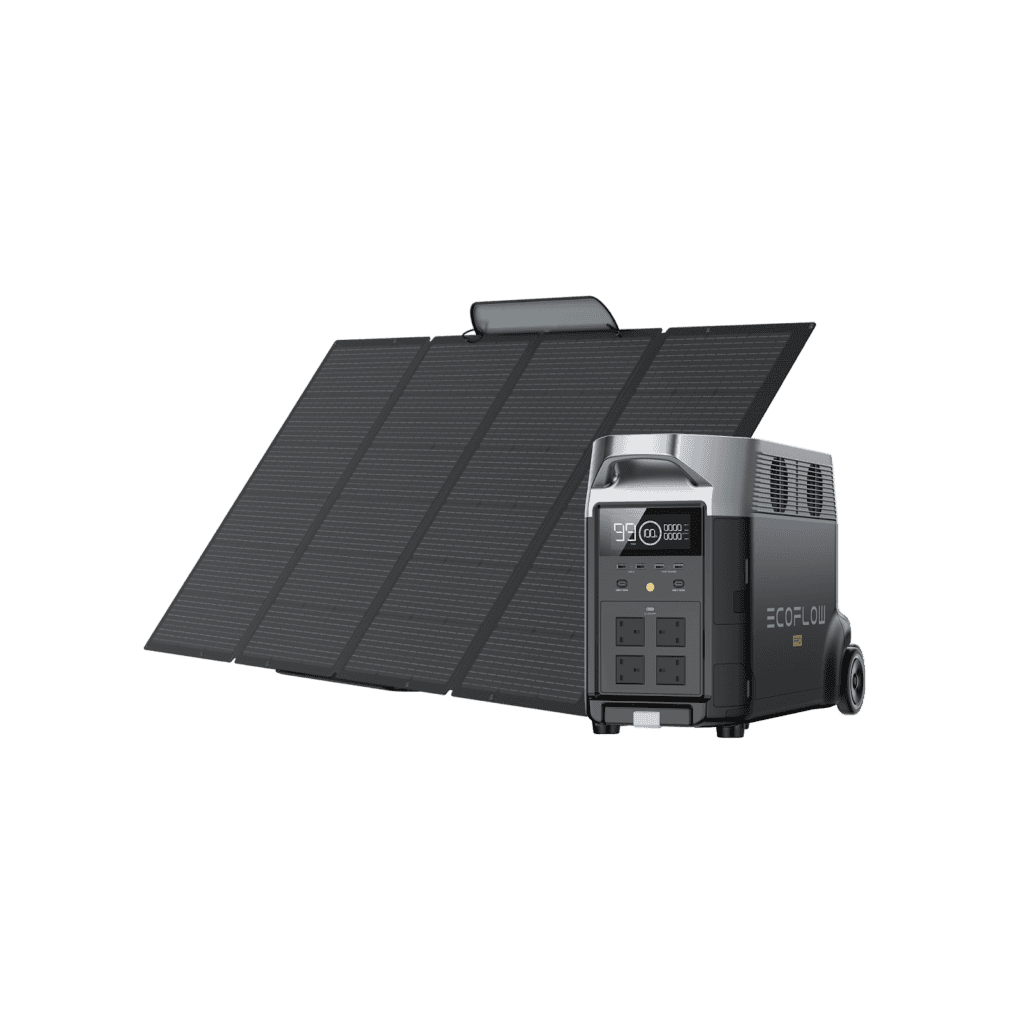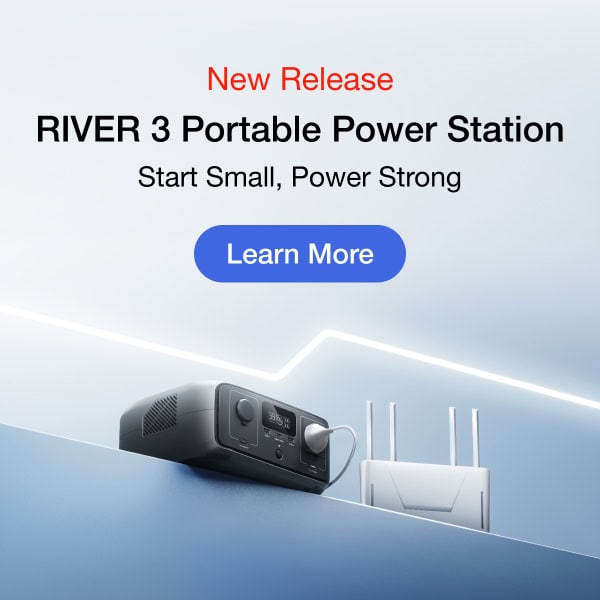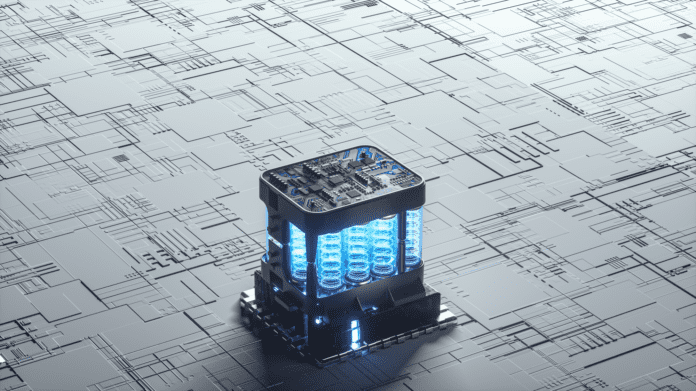If you don’t have a home backup power system, you and your family can be vulnerable during a blackout.
You can keep a traditional fossil fuel generator on standby for a power outage. But petrol and diesel generators guzzle fuel, produce toxic emissions, and are extremely noisy — not to mention terrible for our planet.
What’s a more eco-friendly alternative?
If you have a knack for DIY projects, you can build your own home battery backup system from scratch. The process requires care, attention to detail, and numerous essential components.
Once you know how to do it, building a home battery backup system can be rewarding and cost-effective.
Check out the step-by-step instructions and see if a DIY home battery backup system is a good fit for you.
If it all seems a bit much, we’ll also explore plug-and-play portable power station options, which are also an excellent alternative to traditional generators.
What Do You Need To Build a Home Battery Backup System?
The United States and the world are experiencing more power outages due to extreme weather. The frequency of blackouts means that it’s no longer just a convenience to have a home backup power solution, but a necessity.
Building a home battery backup system requires more than just a battery and some wires. You need to connect the battery to your electrical panel and ensure compatibility between all system components.
Still, the DIY process doesn’t have to be too complicated. It’s a relatively approachable project for a handyperson with basic electrical knowledge and skills.
To build an effective home battery backup system, you’ll require the following components:
- A power inverter
- Home backup battery
- Battery charger
- Wiring and cables
1. Choose a Power Inverter
Your home appliances use alternating current (AC) electricity to run. Unfortunately, batteries generate direct current (DC).
You can’t just connect a battery directly to your home circuit board or your appliances. You need to convert the battery power into AC — commonly known as household electricity.
The device that converts DC power to AC electricity is called an inverter.
When choosing an inverter, the first step is determining how much power output you need to produce. An inverter will carry a rating in watts, but unless you know the consumption required by the appliances and systems you want to run during a blackout, the wattage of the inverter is somewhat meaningless.
To determine your household energy consumption, add the wattage of each device and appliance you want to power or charge during an outage. For example, a 2000-watt inverter can only provide electricity simultaneously to appliances with a combined wattage of 2000W or less.
It’s also crucial to keep in mind that many appliances require a higher wattage to turn on than to operate. This is commonly referred to as surge power or starting watts. Make sure your inverter’s output capacity is sufficient to turn your appliances on, not just keep them running.
For your reference, here’s a table showing the average wattage of everyday home appliances.
Starting and Running Watts of Typical Household Appliances
| Appliance | Rated (Running) Watts | Starting Watts |
| Dishwasher | 1300 | 1800 |
| Washing Machine | 1200 | 2300 |
| Refrigerator/Freezer | 700 | 2200 |
| Light Bulb | 60-75 | 0 |
| Microwave | 600-1000 | 0 |
| TV | 500 | 0 |
| Toaster | 900 | 0 |
| Vacuum | 1440 | 2500 |
| Coffee Maker | 1000 | 0 |
| Blender | 300 | 800 |
| Clothing Iron | 1500 | 0 |
| Dryer | 5400 | 7000 |
| Toaster Oven | 1200 | 0 |
| Curling Iron | 1500 | 0 |
| Space Heater | 2000 | 0 |
| Laptop | 50-300 | 0 |
| 20” Box Fan | 200 | 350 |
2. Choose Your Battery
Next, you need to choose your battery. You will probably need multiple batteries for a whole house backup power supply.
Battery capacities can range from small, 100Wh batteries to larger, 3.6kWh batteries sufficient to power large appliances. To find out how much power output and storage capacity you need, determine the wattage requirements of the appliances or devices you want to power, then multiply that number by the amount of time you want to be able to run it.
For example, running a 300-watt laptop for six hours would require a battery with a minimum power output of 300W and a storage capacity of 1800 watt hours (1.8 kWh).
If possible, select batteries that reach at least double the storage capacity you need so that you can keep them from discharging below 50% capacity.
Depending on the battery chemistry, “deep discharging” can negatively impact lifespan and performance.
Below are some examples of plug-and-play portable power station battery backup options:
- DELTA 2 Portable Power Station—The DELTA 2 power station delivers 1024Wh capacity. You can run several appliances and keep your essentials running during an outage.
- DELTA Pro Portable Power Station—The Delta Pro can run major appliances and heating/cooling systems with a 3.6 kWh power output capacity (expandable to 7.2 kWh/240V). You can connect extra smart batteries and expand the storage capacity to 21.6 kWh for a whole home power backup solution that can run for up to a week.
3. Choose a Battery Charger
Next, you need a component to charge the batteries. A charger and a regulator can recharge your batteries without overcharging them. Make sure your charger is compatible with the batteries you use, as this will prevent damage to the batteries.
If you consistently drain or overcharge your batteries, you risk permanent damage and diminished efficiency. Measuring and regulating the charge your batteries receive allows you to keep them at their maximum capacity and maximum efficiency between uses.
In a blackout, a fully charged battery will supply you with power for longer periods.
If you’re building a solar home backup system to ensure an off-grid energy supply, you’ll need to purchase solar panels and balance of system components. Make sure the solar panels and battery are compatible.
Options like EcoFlow solar panels are universally compatible, but not all photovoltaic panels are. Unless you buy a plug-and-play solar generator, you’ll also need to ensure the compatibility of the inverter, charge controller, and other balance of system components.
4. Connect Your System
Finally, you need to wire your components together. Connect your battery to the inverter, charge controller, and charging source. Next, connect your home battery backup system to your home’s existing wiring using a transfer switch (or power input, if available).
Once everything is hooked up, your home electrical system should draw from the backup battery the next time a power outage occurs.
Mistakes to Avoid When Building a Home Battery Backup System
If you purchase individual components for your battery backup system, you need to ensure those parts are compatible. If you don’t, your battery system will fail before you can even use it.
Similarly, you need to buy quality components. Many people choose the DIY route to save money. However, avoid skimping on the quality of your parts.
The right components will keep your home battery backup system reliable for a much longer time.
Mistake #1: Choosing the Wrong Battery Chemistry
Here are the common backup battery chemistry types in order of efficiency (from best to worst)
- Lithium Iron Phosphate (LFP or LiFePO4) Batteries
- Lithium Ion (Li-ion) Batteries
- Nickel Cadmium (Ni-Cad) Batteries
- Lead Acid Batteries
Unfortunately, the more efficient the battery chemistry, the more expensive the battery is likely to be. Don’t make the mistake of only considering upfront costs, though. Lead acid batteries will quickly need to be replaced — LiFePO4 batteries can last a decade or more.
Mistake #2 Underestimating Your Energy Consumption
If you’re building a battery system to meet your backup power requirements, make sure you’re accurate about how much electricity you need to consume during a blackout.
A system built to power your highest-wattage appliance is great if that appliance is all you want to run. If not, you need to make sure you account for all the other appliances and devices you want to run or charge simultaneously.
Add the wattage of all those devices together (don’t forget surge power or starting watts if needed). Aim to exceed your estimated power output and storage requirements by at least 20%, just to be on the safe side.
Mistake #3 Connecting Your Backup Battery to Your Home Wiring System Yourself
Unless you’re experienced at working with high voltage electrical wiring, hire a professional electrician.
Installing a transfer switch to connect your backup battery to your home circuit panel is a fast and easy job for a professional. If you try to DIY, you could electrocute yourself or create a fire hazard that you may not even know about until it’s too late.
Alternative Home Battery Backup Solutions
Building a home backup battery system involves numerous steps and selecting multiple compatible components.
There’s a lot of room for error.
Alternatively, you can purchase a plug-and-play solution.
EcoFlow offers solutions to back up and power your entire home in a blackout. Or you can go completely off-grid with solar panels to achieve energy independence:
- Whole Home Backup Power Solution: The EcoFlow advanced whole home backup power solution consists of two DELTA Pro Portable Power Stations connected via the EcoFlow Double Voltage Hub. By chaining two DELTA Pros together, you can achieve 7.2kWh of power output. Connect up to four smart extra batteries, and you can have up to 21.6 kWh of battery storage — which will last many homes up to a week. Connecting the whole home backup power solution to your home circuit panel creates a built-in backup system that can switch on instantly during a blackout and meet all your power demands.
Also, don’t forget, all of EcoFlow’s portable power stations — including the DELTA Pro — can recharge using solar panels. Turn your backup battery into a solar generator with one simple connection. - Power Kits: If you need off-grid power for a tiny home or motorhome, an EcoFlow Power Kit can deliver all the electricity you need. Check out EcoFlow’s online calculator to help you build a modular system based on your energy consumption needs.

Final Thoughts
Your home is at risk of power outages at any time. A backup power supply is the best safeguard against energy vulnerability.
EcoFlow has the products and the expertise you need to keep your appliances running and your lights on — even during an extended power outage.
Reach out today for help with your home backup power needs.





